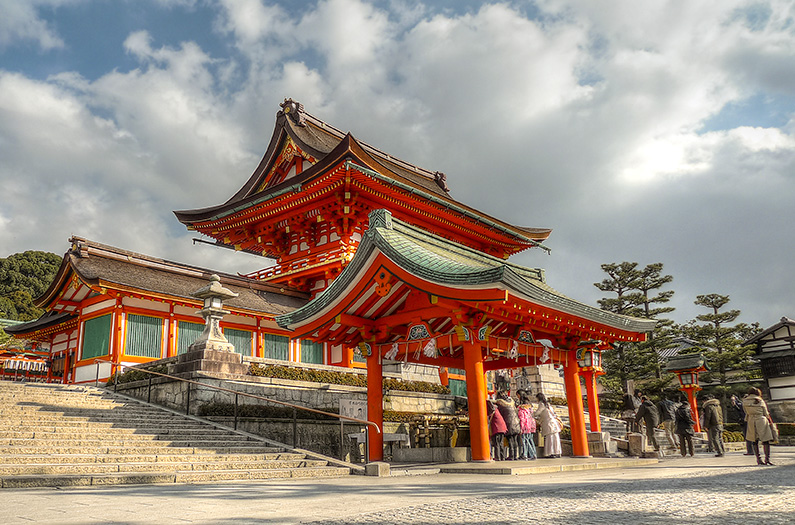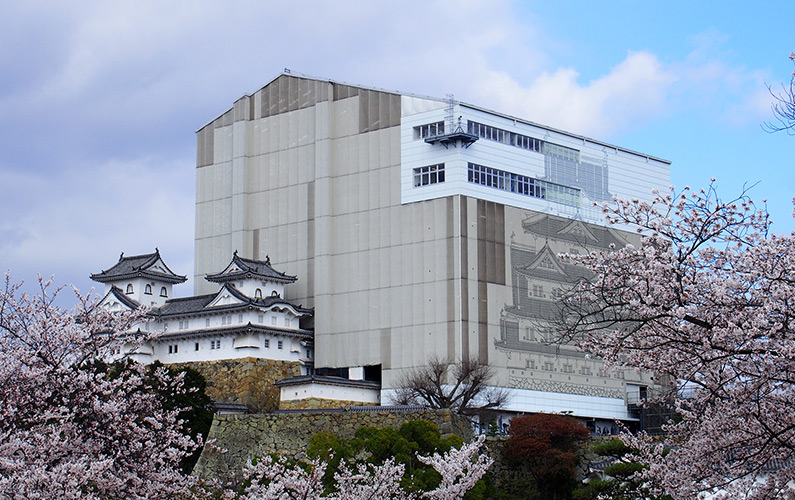The tower gate is a unique architectural feature of religious sites in Japan. It is one of a few buildings that are common to both shrines and temples. The rōmon is a two storied gate that features: a single roof on top; a decorative balcony in the middle; supported by a series of columns that form the entrance.
Tower Gate 「楼門 rōmon」 at Fushimi Inari Taisha

Fushimi Inari Taisha’s Tower Gate (HDR Photo)
This photo is of the tower gate at Fushimi Inari Shrine, a UNESCO World Heritage site in Kyoto. Visitors pass through two torii gates and stop at the temizuya before approaching the rōmon.
A Rōmon marks the entrance to sacred ground in a shrine or temple. The etiquette for using the tower gate is similar to that of the torii (what you could call a “normal” gate). Be a good visitor and bow before passing through the gate. The entrance is in the middle of the ground floor, flanked by two alcoves.
Protective kami (gaurdian spirits) statues are often found inside the two alcoves surrounding the entrance. You can see these at Sensoji in Asakusa, in the zuishimon (a particular type of tower gate) at Kanda Shrine in Akihabara.
Location of this photo:
Loading map...





